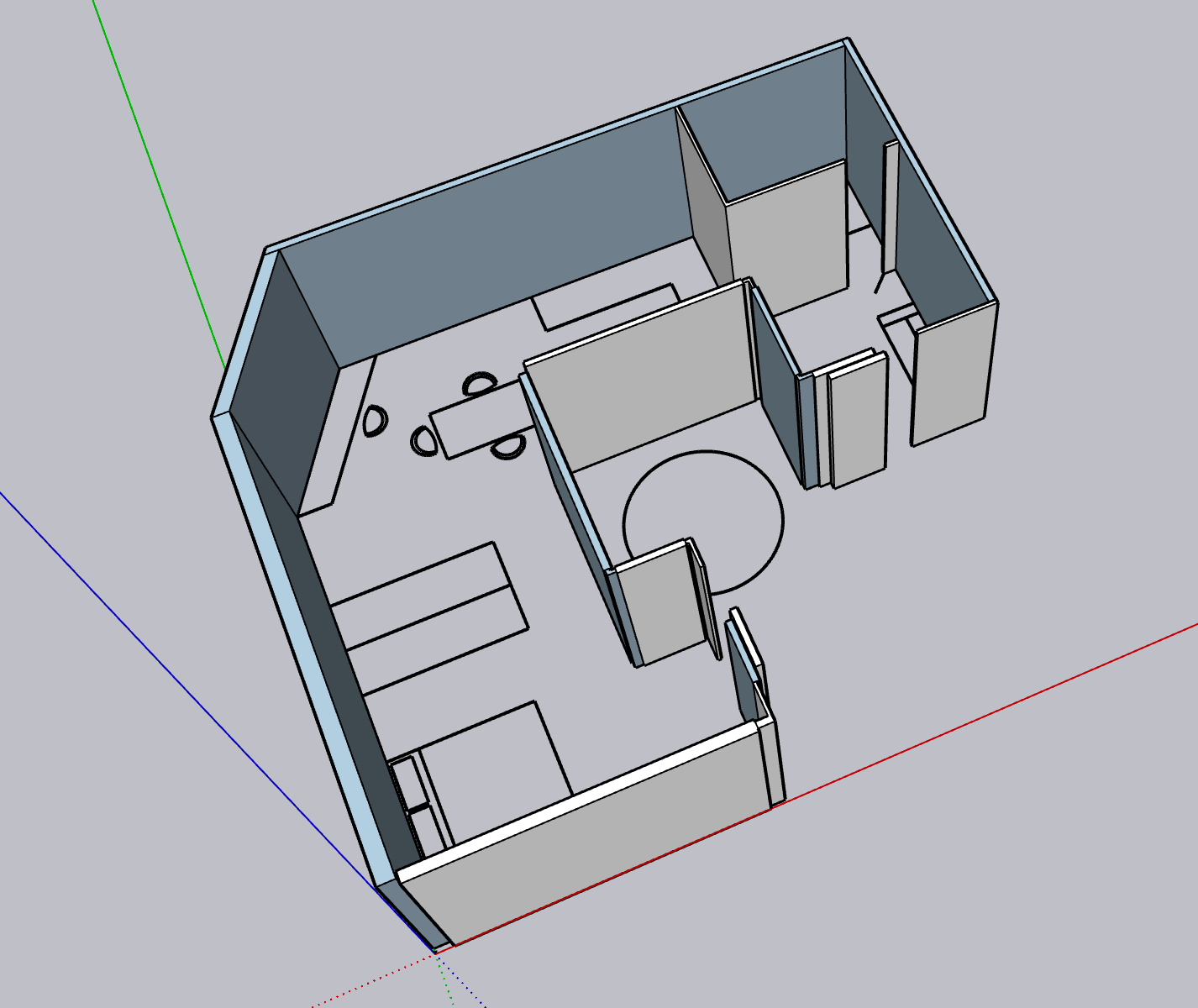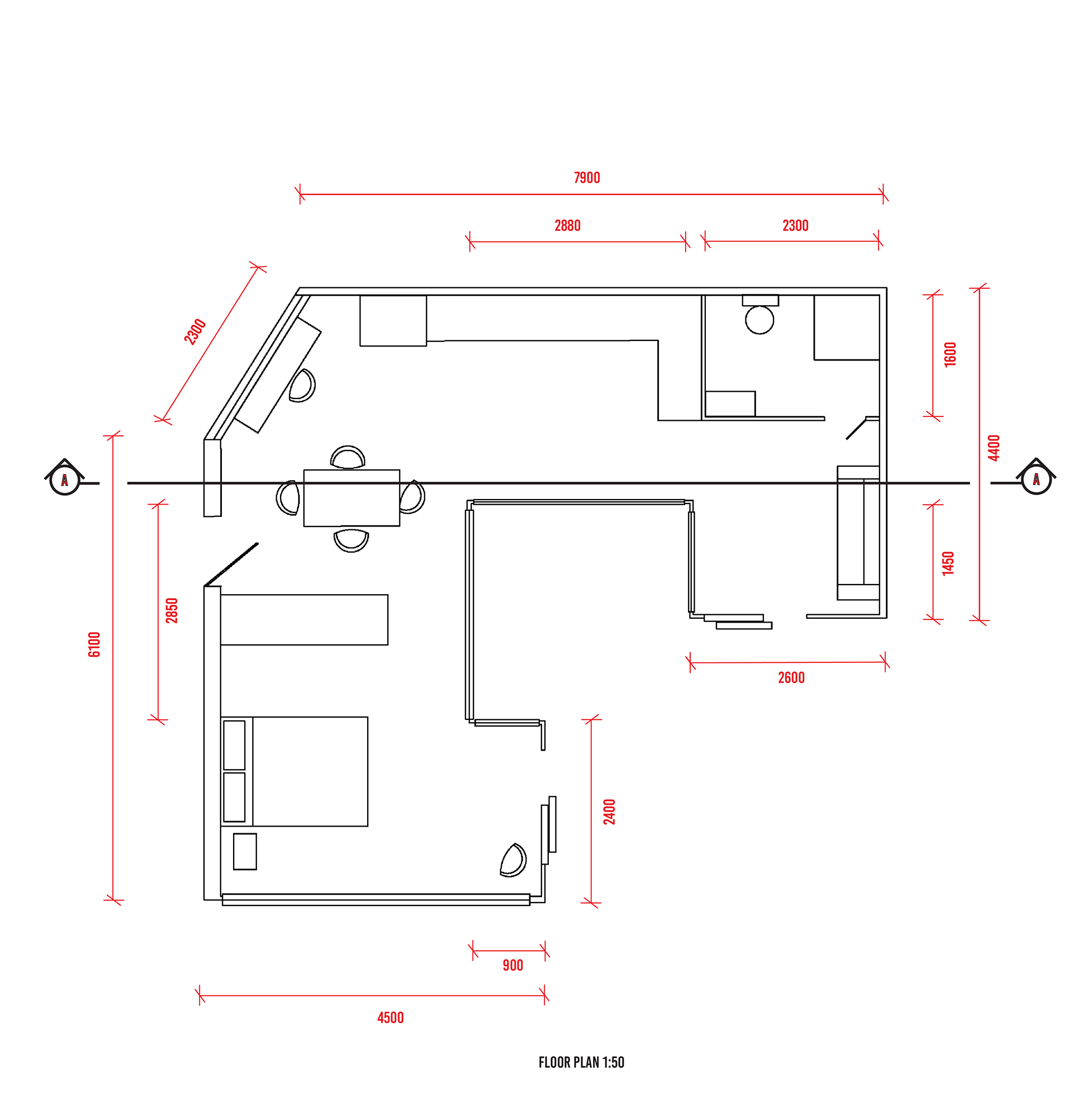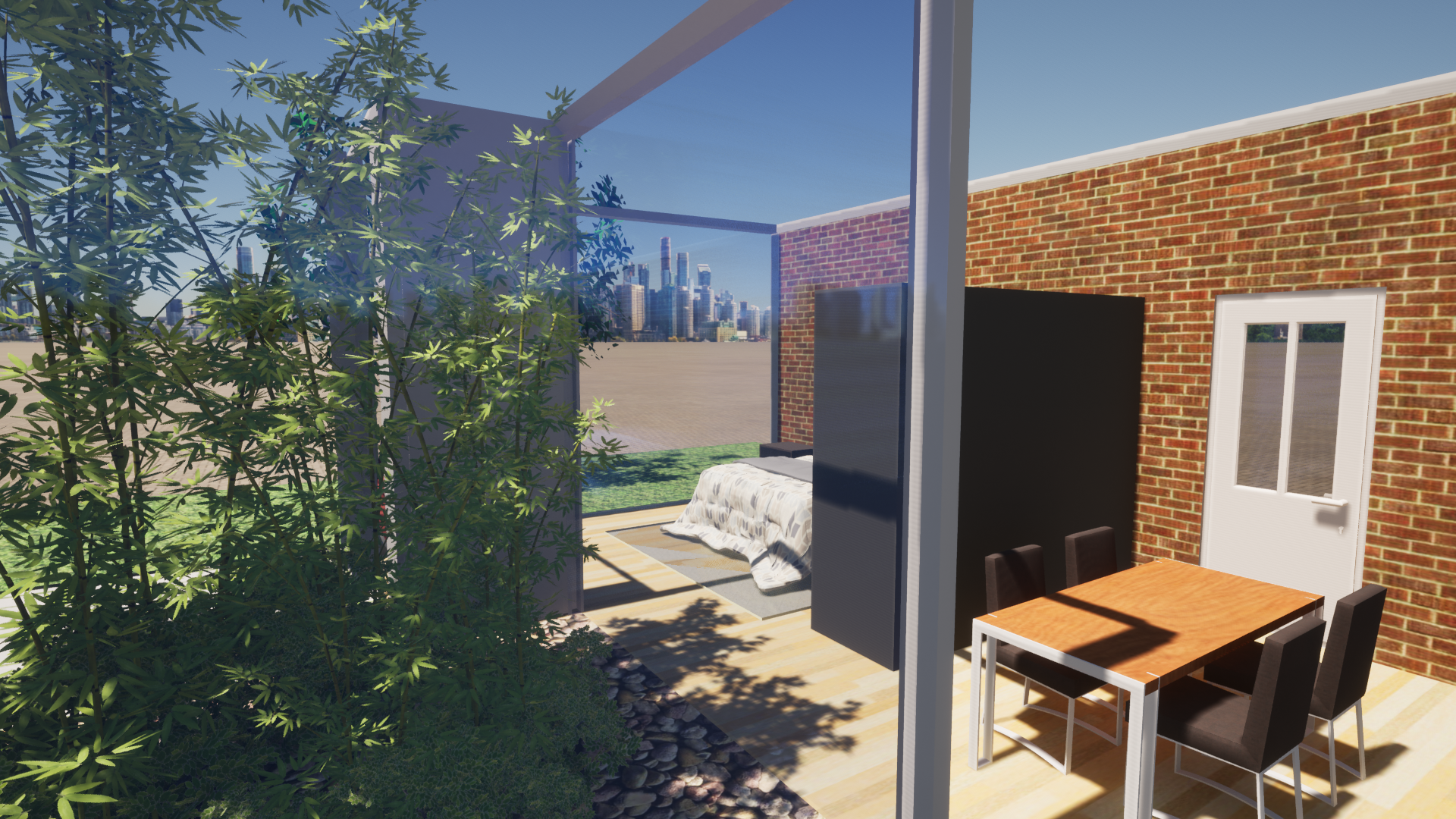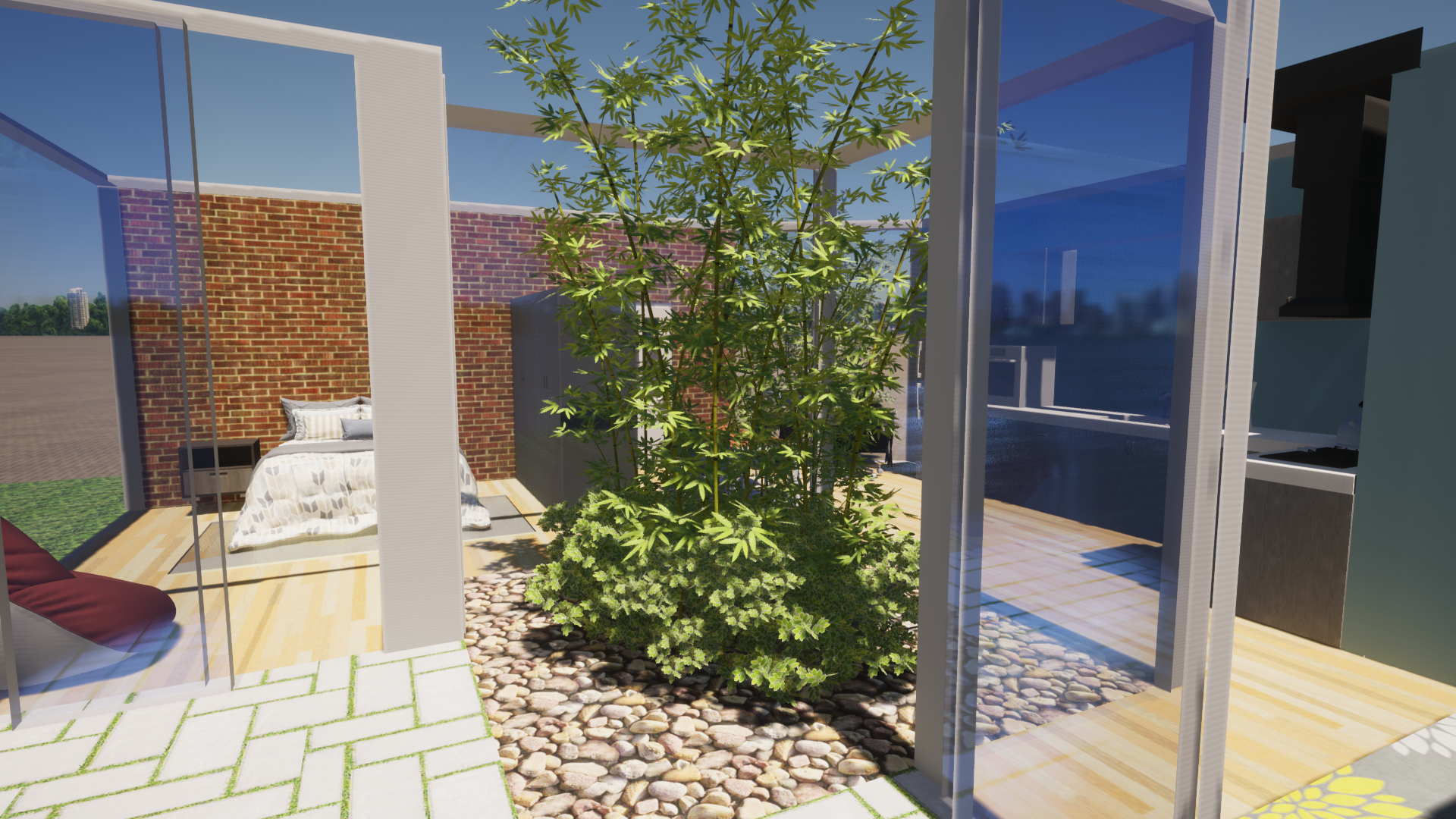Brief: Design a living space for a person with a disability.
Process: I decided to look at a user with Type 1 Diabetes and Major Depressive Disorder, I enjoyed working within the limited space we were asked to design in. It was very interesting to research how much your immediate surroundings and environment can impact and manipulate your mood.
Outcome: A space designed specifically for a user, placed in an independent but supported living complex.
Process: I decided to look at a user with Type 1 Diabetes and Major Depressive Disorder, I enjoyed working within the limited space we were asked to design in. It was very interesting to research how much your immediate surroundings and environment can impact and manipulate your mood.
Outcome: A space designed specifically for a user, placed in an independent but supported living complex.






This space was designed for a supported independent living complex in a mental health facility. The user for this specific apartment is a
Type 1 diabetic and has also developed a comorbid major depressive disorder where they experience episodes of low mood and are not easily motivated for activities. Their mood is heavily affected by their surroundings, therefore are in need of a space that allows for excessive storage and a mood lifting and inspiring surrounding. The structure is open plan to provide a flexible space that can be adapted to the user’s daily triggers and motivations. The space provides functions including: sleeping, leisure, food production and consumption, hygiene and storage.
Type 1 diabetic and has also developed a comorbid major depressive disorder where they experience episodes of low mood and are not easily motivated for activities. Their mood is heavily affected by their surroundings, therefore are in need of a space that allows for excessive storage and a mood lifting and inspiring surrounding. The structure is open plan to provide a flexible space that can be adapted to the user’s daily triggers and motivations. The space provides functions including: sleeping, leisure, food production and consumption, hygiene and storage.
Through conducting research on both disabilities, the space has been designed to provide storage for current and stock supplies to do with their diabetes as well as other life events. The space provides excess natural light that can be altered through the use of blinds and shades (Interior Design Use in Alleviating Depression and Anxiety by Jennifer Silvis). Research has shown that the inclusion of natural light into a depressed individual’s space avoids the production of the melatonin hormone in the blood, where the hormone makes the individual sleepy and lethargic. The lighting in the space is therefore alterable to the user’s needs however is able to be maximised as it is believed that ‘the human body uses light just like water or food as a nutrient to fuel processes’ (Effect of Lighting and Space on Depression and Stress Appearing in Residential Places by Ali Akbar Heirdari etc). The glass used for the windows is one-way mirror glass allowing for privacy and a mirrored view of nature when sitting outside.
There is the ability to open numerous doors for air ventilation and to let in the scents of the plants outside as well as an air conditioning unit above the cupboards between the bedroom and living spaces. The space celebrates nature and is constantly seen moving throughout; views and being surrounded by nature are known to restore ‘the stressed mind to a calm and alert state,’ as a view of nature helps to calm an individual with MDD (Green for Wellbeing by Zoe Myers). Plants used in the outside area include jasmine and lavender, natural scents that are known to calm the mind. The walls are painted in colours per the use of that room, for example blue in the living space to create a calm area that promotes creativity, and earthy greens in the bedroom for relaxation. These colours have been selected as they are not bright and overbearing, to stimulate the nervous system in a calming nature. The light-coloured flooring is made from vinyl and has a hardwood floors look, research has shown that a natural coloured grainy wood looking floor lifts depressive moods as it provides texture (Designing the Therapeutic Space by Nicola Davies). Multiple seating areas are provided to stimulate different moods and uses, these areas are scattered around the space to fit in with the user’s needs, for example sleeping, relaxing, eating and working (Designing the Therapeutic Space by Nicola Davies). The seating furniture materials have been picked to stimulate a tactile response for the user to associate with different uses.





